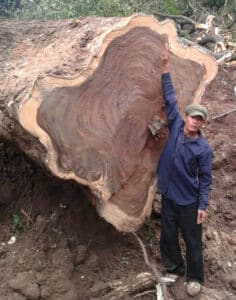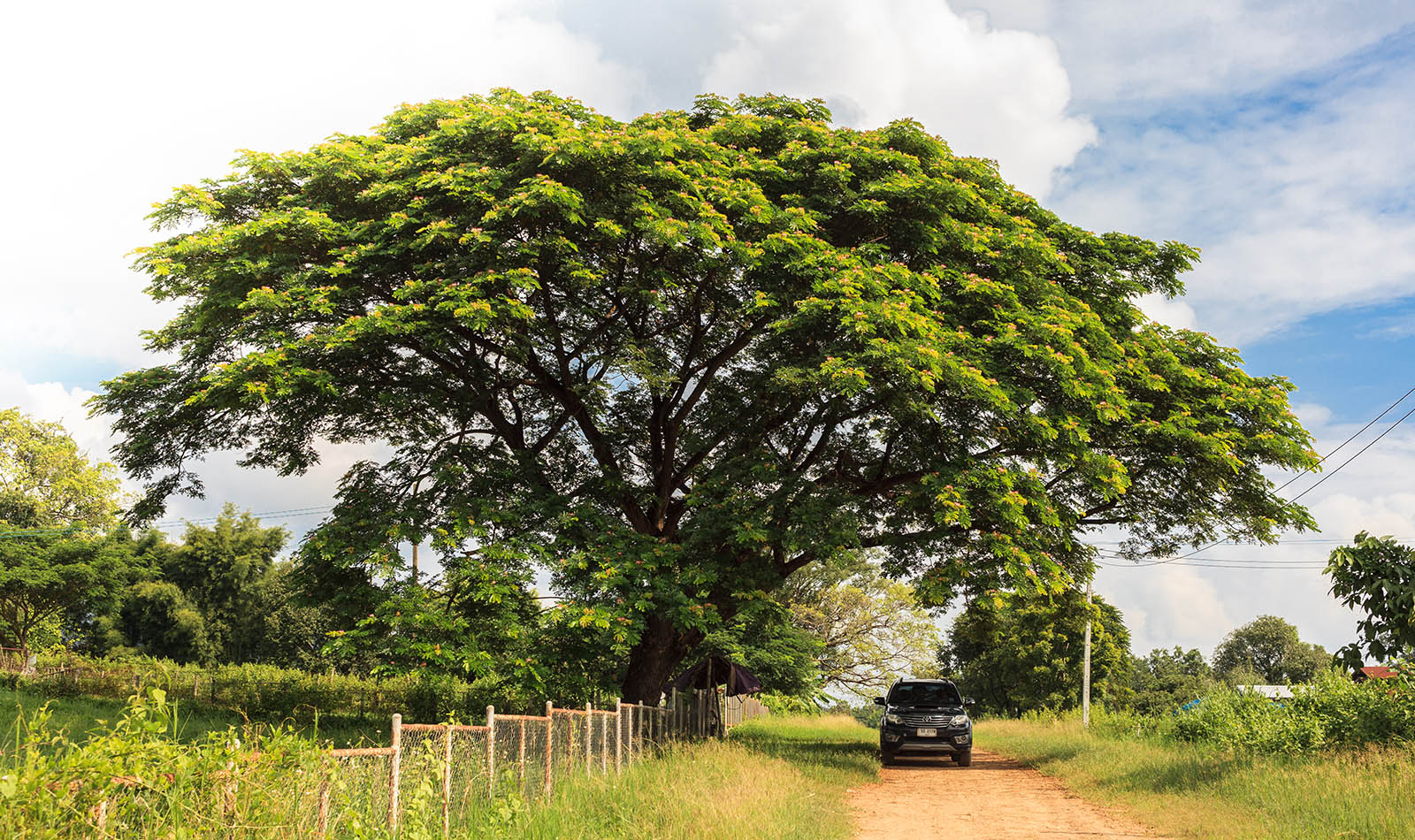Briefly:
Suar wood comes from a fast-growing, tropical acacia species that grows en masse in all tropical regions of the world. Suar wood from
- Southeast Asia is not rainforest wood and is therefore not subject to the regulations for protected wood species.
- Due to its fascinating grain and stability, Suar wood is ideally suited for furniture construction. Especially for furniture such as Table tops that are made from one piece are ideally suited to Suar wood.
Where does suar wood come from?
Suarwood is a type of wood obtained from a tropical species of acacia with the scientific name Samanea Saman. Colloquially, the tree is also called rain tree, Asian oak, French tamarind, Saman or Monkey Pod. Acacias and thus also the Samanea Saman belong as legumes to the mimosa family (Mimosoideae).
The Samanea Saman is one of the fastest growing plants with a growth of approx. 75 to 150 cm per year. When growing freely, it typically reaches a height of 17 to 24 meters. After approx. 40-60 years it reaches a trunk diameter of approx. 100 centimeters and a crown diameter of 40 meters.

In rare cases, a very old tree can reach a trunk diameter of over 2 meters and a crown diameter of 60 meters. The treetop has an umbrella-like shape. In order to supply the huge crown structure with sufficient food, the Samanea Saman forms a far-reaching, underground and strong root system that can easily destroy wall foundations. It is therefore not recommended to plant these trees closer than 30 meters from settlements.
The Saman Samanea is a flowering tree species. The main flowering period takes place in May and June. Its 25 to 40 cm large, double-pinnate, alternately arranged leaves fold up in rainy weather and in the evening so that the rain can penetrate the crown unhindered. Perhaps it is due to the fact that grass can grow under its crown. A scientific justification for this cannot yet be found. The flowers of the Samanea Saman are petiolate and tassel-like.
The anthers are colored white to pink or light red. The flowers carry nectar and are approached by insects. After flowering, the Samanea Saman forms 15 to 20 cm long, green pods that later turn brown to black-brown. The young pulp of the pods is edible. The consistency is tough, the taste is sweet.
How do Suar trees grow?
The bark of the Samanea Saman is gray to gray-brown, still smooth on the young tree, later rough and cracked. The inner bark is light brown to gray-pink in color. The sapwood is whitish to yellowish. The grain of the heartwood can take on different colors. From red-brown to chocolate-brown, everything is possible. Basically, the older the tree is and the slower it grew, the darker its heartwood. It is this great variety of colors that makes Suar wood so unique and fascinating.
Why is there so much suar wood?
The Samanea Saman originally comes from the South American rainforest. During their 500-year colonial rule, Portuguese colonial rulers brought the seeds of the tree to Southeast Asia in the 16th century, where the tree was able to spread expansively due to ideal climatic conditions. Another reason for its success story is that the tree with its massive crown is very popular as a shade provider in hot, tropical regions and is therefore massively cultivated. Today you can find the Samanea Saman in Southeast Asia everywhere on the roadsides, in meadows, fields, in parks and gardens. For several years now, the fast-growing wood has also been grown on plantations for wood processing.

What is special about Suar wood?

Tropical wood is not exposed to any major climatic fluctuations. It can grow evenly over its entire life cycle. This gives tropical wood a significantly higher stability than wood from temperate climates. This makes the wood more robust against cracks than z. B. Wood from Central Europe, Canada or Central USA.
With regular exposure to heat, the structure grows much more evenly and cleaner than trees in colder climates. Tropical trees such as the Samanea Saman do not develop any visible annual rings due to the uniform climatic conditions. The result of these conditions are fascinating color highlights with merging grains and without interruptions.
Suar wood is easy to work, saw and polish. It also has weatherproof properties. Suar wood is counted among the soft types of wood, as the tree from which it comes is a legume and therefore does not bear any nut-like fruit. Nevertheless, the wood is comparatively hard. The density of green Suar wood is approx. 0.5 to 0.6 (103 kg / cbm) and is therefore about as hard as walnut wood. With a weight of approx. 750 kg / cbm.


 Suar wood comes from a fast-growing, tropical acacia species that grows en masse in all tropical regions of the world. Suar wood from
Suar wood comes from a fast-growing, tropical acacia species that grows en masse in all tropical regions of the world. Suar wood from